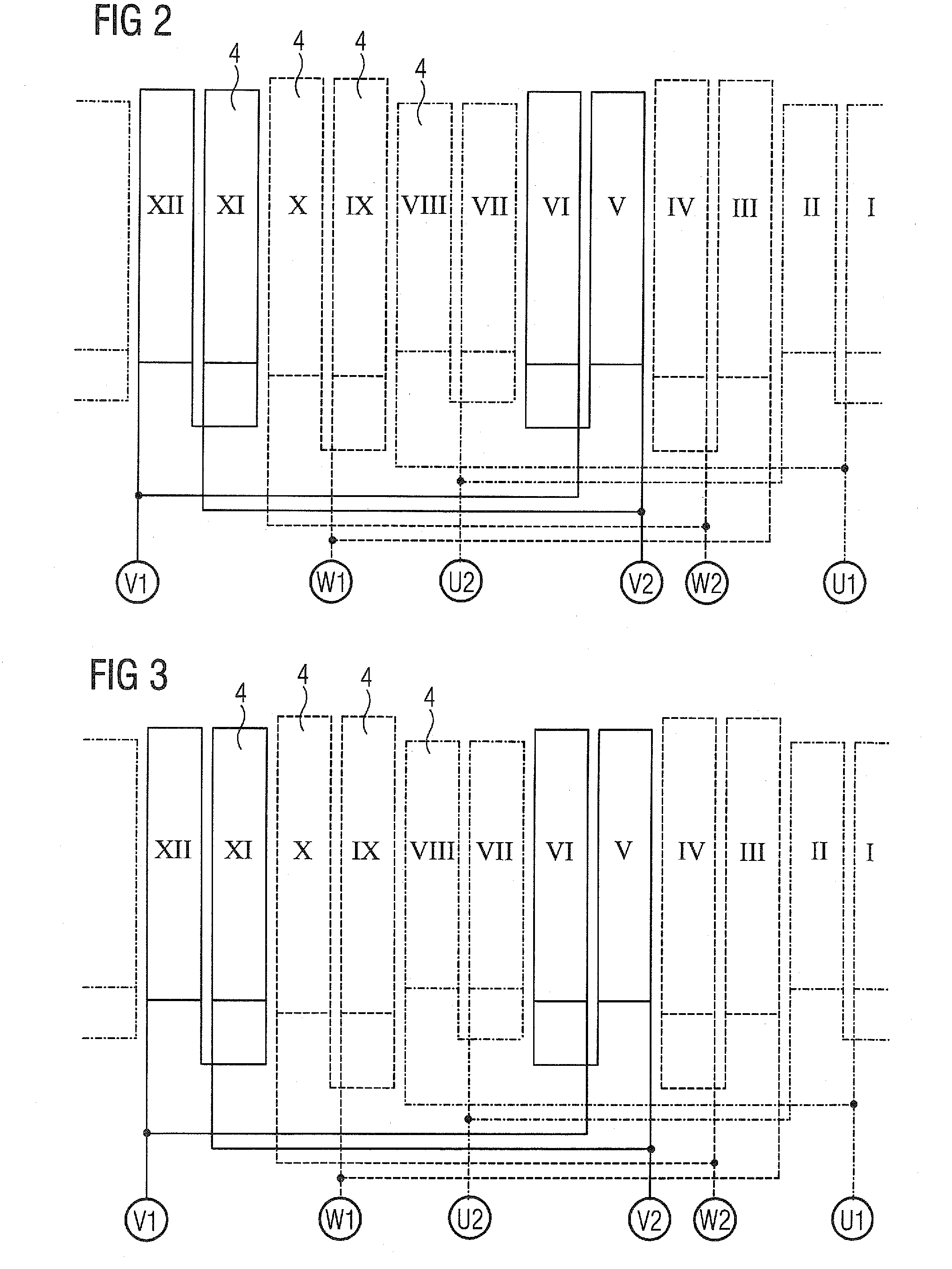Three-phase dynamoelectrical permanently excited synchronous machine
a dynamoelectric and synchronous machine technology, applied in the direction of dynamo-electric machines, electrical apparatus, magnetic circuit shapes/forms/construction, etc., can solve the problems of permanent magnet breaking, permanent magnets being produced at higher cost, and the magnetic field cannot be arbitrarily thin, so as to reduce the detent and pulsating torque, and the edge of the permanent magnet is lower.
- Summary
- Abstract
- Description
- Claims
- Application Information
AI Technical Summary
Benefits of technology
Problems solved by technology
Method used
Image
Examples
Embodiment Construction
[0045]Throughout all the figures, same or corresponding elements may generally be indicated by same reference numerals. These depicted embodiments are to be understood as illustrative of the invention and not as limiting in any way. It should also be understood that the figures are not necessarily to scale and that the embodiments are sometimes illustrated by graphic symbols, phantom lines, diagrammatic representations and fragmentary views. In certain instances, details which are not necessary for an understanding of the present invention or which render other details difficult to perceive may have been omitted.
[0046]Turning now to the drawing, and in particular to FIG. 1-3, there are shown circuit diagrams of a three-phase U, V, W stator 2 of a permanently excited synchronous machine 1 with twelve slots 3, which stator is provided with a winding system which has tooth-wound coils 4 in the present exemplary embodiment. Each tooth-wound coil 4 comprises a tooth 5 of the stator 2 in ...
PUM
 Login to View More
Login to View More Abstract
Description
Claims
Application Information
 Login to View More
Login to View More - R&D
- Intellectual Property
- Life Sciences
- Materials
- Tech Scout
- Unparalleled Data Quality
- Higher Quality Content
- 60% Fewer Hallucinations
Browse by: Latest US Patents, China's latest patents, Technical Efficacy Thesaurus, Application Domain, Technology Topic, Popular Technical Reports.
© 2025 PatSnap. All rights reserved.Legal|Privacy policy|Modern Slavery Act Transparency Statement|Sitemap|About US| Contact US: help@patsnap.com



